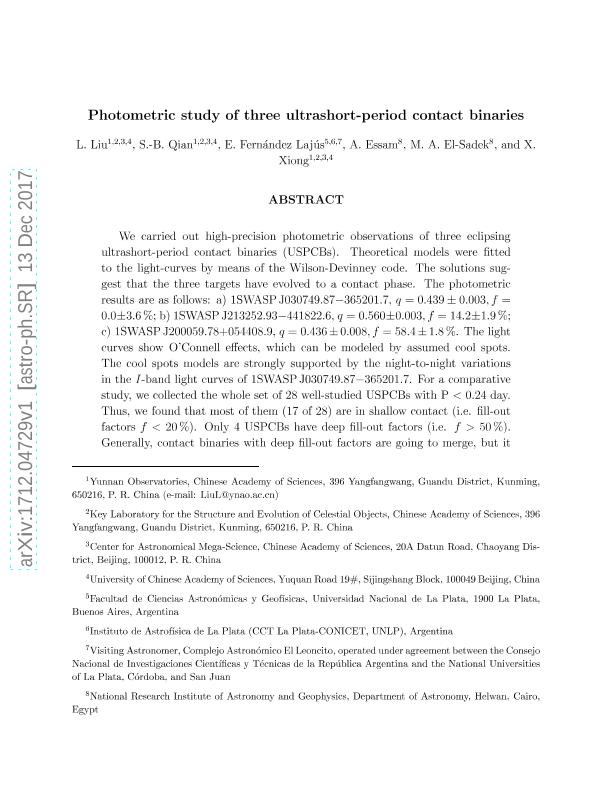Artículo
Photometric study of three ultrashort-period contact binaries
Fecha de publicación:
01/2018
Editorial:
Springer
Revista:
Astrophysics And Space Science
ISSN:
0004-640X
Idioma:
Inglés
Tipo de recurso:
Artículo publicado
Clasificación temática:
Resumen
We carried out high-precision photometric observations of three eclipsing ultrashort-period contact binaries (USPCBs). Theoretical models were fitted to the light curves by means of the Wilson-Devinney code. The solutions suggest that the three targets have evolved to a contact phase. The photometric results are as follows: (a) 1SWASP J030749.87−365201.7, q= 0.439 ± 0.003 , f= 0.0 ± 3.6 % ; (b) 1SWASP J213252.93−441822.6, q= 0.560 ± 0.003 , f= 14.2 ± 1.9 % ; (c) 1SWASP J200059.78+054408.9, q= 0.436 ± 0.008 , f= 58.4 ± 1.8 %. The light curves show O’Connell effects, which can be modeled by the assumed cool spots. The cool spots models are strongly supported by the night-to-night variations in the I-band light curves of 1SWASP J030749.87−365201.7. For a comparative study, we collected the whole set of 28 well-studied USPCBs with P< 0.24 day. Thus, we found that most of them (17 of 28) are in shallow contact (i.e. fill-out factors f< 20 %). Only four USPCBs have deep fill-out factors (i.e. f> 50 %). Generally, contact binaries with deep fill-out factors are going to merge, but it is believed that USPCBs have just evolved to a contact phase. Hence, the deep USPCB 1SWASP J200059.78+054408.9 seems to be a contradiction, making it very interesting. Particularly, 1SWASP J030749.87−365201.7 is a zero contact binary in thermal equilibrium, implying that it should be a turn-off sample as predicted by the thermal relaxation oscillation (TRO) theory.
Archivos asociados
Licencia
Identificadores
Colecciones
Articulos(IALP)
Articulos de INST.DE ASTROFISICA LA PLATA
Articulos de INST.DE ASTROFISICA LA PLATA
Citación
Liu, L.; Qian, S. B.; Fernandez Lajus, Eduardo Eusebio; Essam, A.; El Sadek, M. A.; et al.; Photometric study of three ultrashort-period contact binaries; Springer; Astrophysics And Space Science; 363; 1; 1-2018; 1-20
Compartir
Altmétricas




